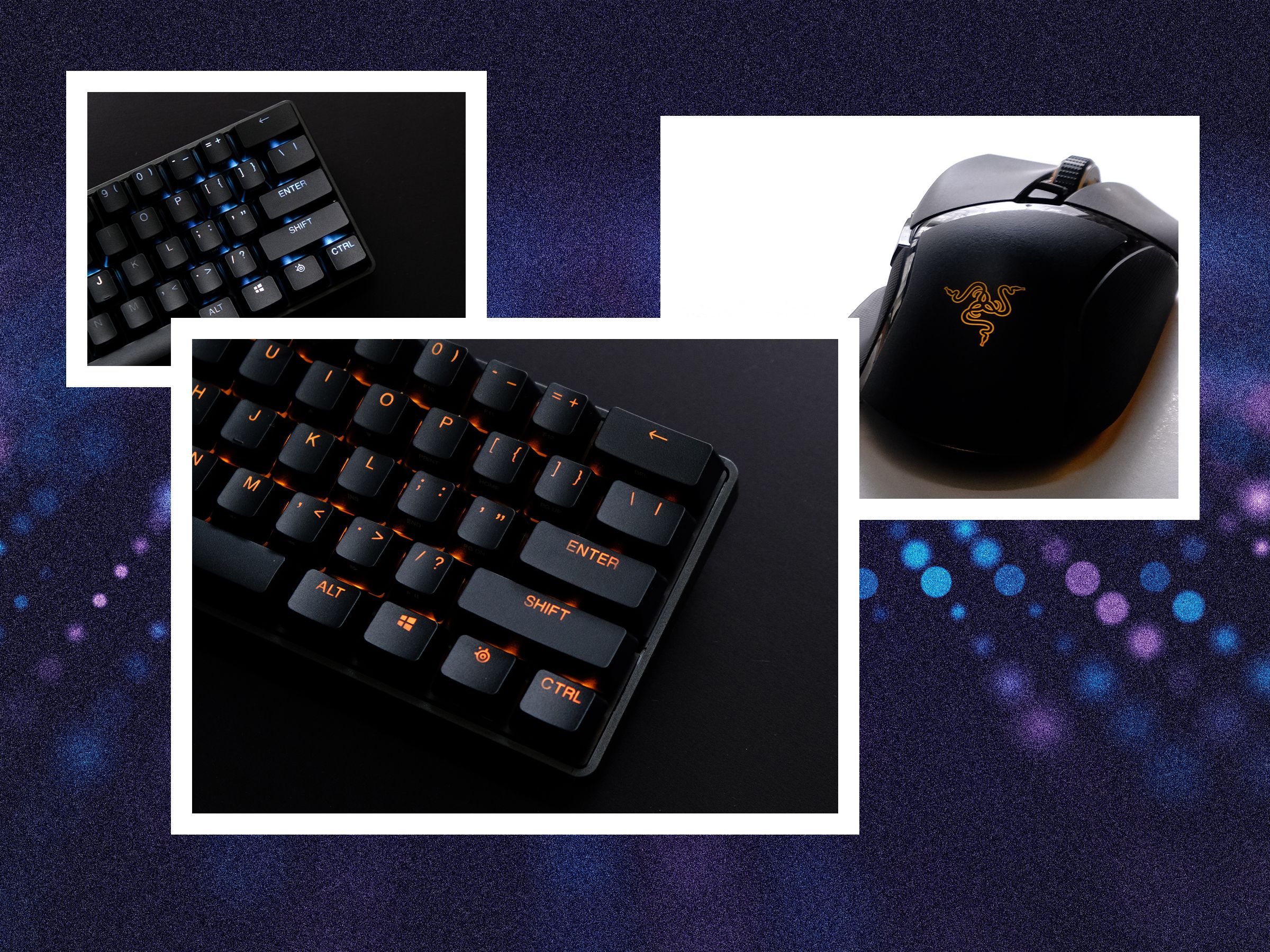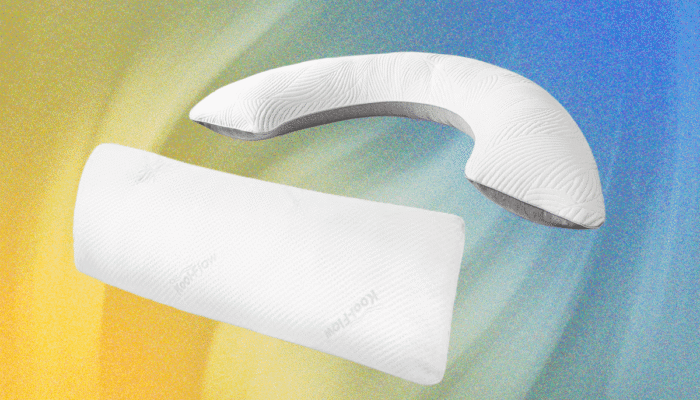The SteelSeries Apex Pro Mini Gen 3 is one of the few Hall effect keyboards with a true 60% layout today, and if nothing else, that makes it special. I’ve long been a proponent of the 60% keyboard. It’s by far the smallest keyboard layout that’s still accessible, and it encourages extensive use of function layers, a skill that can make your typing more efficient. A 60% keyboard can save desk space, is more efficient, and is also portable if you want to take it to the office.
Every new Hall effect keyboard has a few things in common: They all use roughly the same switches and have similar technical specs. The real differentiating factors of these keyboards are the layout and tactile experience of using them. This is where the $220 Apex Pro Mini both succeeds and falls short. The layout and design are great, but the experience of using this keyboard doesn’t feel up to par with its competitors.
Photograph: Henri Robbins
Smooth Switch
The latest generation of the Apex Pro Mini uses the OmniPoint 3.0 switch, a fully adjustable Hall effect switch manufactured by Gateron for SteelSeries. Most Hall effect switches, including those in Wooting, Keychron, and Corsair keyboards, are manufactured by Gateron with the same general construction and only small differences between each brand’s version of the switch. (I go into depth about Hall effect switches here.)
The OmniPoint 3.0 switch uses a dual-rail design meant to increase stability and reduce the side-to-side wobble of individual keys. On a standard mechanical switch, the internal sliding mechanism (the stem) has a thick rail on either side that guides the vertical movement of a keypress. On a dual-rail switch, this singular rail on the stem is replaced with two thinner ones, and an additional tab on the switch’s housing sits between them. This all works together, in theory, to increase the tolerances of the switch without adding friction or scratchiness to the keypress.
Photograph: Henri Robbins
In practice, I find the difference between this system and a standard rail minimal. With modern material science and factory lubrication, both can be incredibly smooth, and the amount of wobble when typing is going to be small on any decent-quality switches. However, I have found that the typing sound from dual-rail Hall effect switches is marginally more “crisp” than single-rail Hall effect switches, which tend to be a bit dull and lacking in the top end of their sound profile.
The OmniPoint 3.0 switches are not particularly dissimilar from other Gateron-made Hall effect switches, but this certainly isn’t a bad thing. They sound good and are incredibly smooth to type on, with a limited scratchiness that can only be noticed when pressing individual keys slowly. It is hard to find any issues with the switches themselves.
The stabilizers, though, were inconsistently tuned from the factory. Some of them felt scratchy or made rattling noises, while others were over-lubricated and felt dull when pressed. The mounting method, a tray mount where the plate and printed circuit board (PCB) are screwed into the case at multiple points, avoid the typical “dead zones” of tray mounting by using a thicker aluminum plate, but typing still lacked the responsive feeling and bounciness of a gasket-mounted keyboard. These contributed to make a typing experience that, while not terrible, doesn’t feel particularly impressive either, especially when this keyboard is on the higher end of the price range.
Photograph: Henri Robbins
Fast, Flashy, and Sometimes Finicky
Across every game I tested, I was impressed by the responsiveness of these switches. The ability to customize the actuation distance makes it easy to fine-tune for my preferences, and the Rapid Trigger feature makes movement snappy and responsive compared to a standard mechanical keyboard.
However, that’s all true for every mainstream Hall effect keyboard. The Apex Pro TKL will perform like the Wooting 60HE, which will be like the Keychron K2 HE, which will be like the Corsair K70 Pro TKL. There may be small differences based on the manufacturer’s software, how the keyboard is programmed, and what generation of switches it uses, but these differences are so marginal that it will only matter to the most detail-oriented players.
Ultimately, the largest gains in performance with this keyboard come from the smaller layout. Compared to a larger keyboard, the Apex Pro Mini offers more space for mouse movements and more efficient controls with the built-in function layers. I will always think this tradeoff is worth it, but this might not be the case for someone who extensively uses their number pad, function row, or arrow keys.
Photograph: Henri Robbins
The largest issue with the Apex Pro Mini is its software: SteelSeries GG. While GG is not terrible, it’s not great either. Settings like individual switch actuation points or dual-bindings (where pressing a switch partially creates one input, and all the way creates a second one) are easy to set and work consistently, but I found the menus to be cluttered and difficult to navigate. The home screen of GG, which I expected to be a hub for connected devices and quick customizations, instead presents the user with ads for the rest of SteelSeries’ product lineup.
RGB customizations are easy to configure and work well, especially with unique features like an on-keyboard RGB audio visualizer. However, I found the Apex Pro Mini’s lighting to be less bright than the other accessories on my desk, and its customization options were more limited.
The Apex Pro Mini features “Protection Mode,” a feature added in the newest 3.0 generation of the Apex line. This automatically decreases the sensitivity of surrounding keys when a selected key is pressed to prevent mis-inputs. While I didn’t find myself constantly using this feature, I did find it helpful in ability-focused games like Destiny 2 or Marvel Rivals, where multiple adjacent keys are mapped to different abilities with cooldowns. However, GG doesn’t tell you which keys are considered “adjacent,” so I was sometimes left wondering whether a specific key, such as the X key when pressing the spacebar, would be affected by Protection Mode. I like this function, but it could use some refinement on the software.
Photograph: Henri Robbins
Underwhelming, Unusual Assembly
The Apex Pro Mini is shockingly robust considering its plastic case. The keyboard feels solid, and the thick aluminum plate ensures it can’t be flexed or bent by hand. The keycaps are standard for a gaming-oriented keyboard. They are passably thick, double-shot, and have shine-through for the keyboard’s RGB lighting. They also have front-facing legends that indicate the default layout of the function layer, which I like, although it’s disappointing that these aren’t shine-through as well.
On the underside of the keyboard, there’s a large silicone flap that can be lifted to reveal a switch puller and a hidden sticker with all of the legal fine print. I like this detail; it’s a good way to keep the switch puller from getting lost and keep the underside of the keyboard looking clean.
Photograph: Henri Robbins
Like almost every keyboard today, the Apex Pro Mini has multiple layers of sound-dampening inside the case. This includes a dense foam layer between the plate and PCB, a secondary foam layer underneath the PCB, and a thick piece of silicone filling the bottom of the case. Peeling back the silicone reveals two internal steel weights, which serve to make the keyboard feel more dense, along with preventing it from sliding around on your desk, which is not typically done on a keyboard with a plastic case. However, these weights and the silicone dampening make up a large part of the keyboard’s heft, leaving it feeling light and insubstantial when they are removed.
Instead of being held together with standard Phillips screws, the Apex Pro Mini uses a T6 torx bolt. This makes disassembly marginally more difficult for the average buyer, but T6 screwdrivers are cheap and commonplace. Once these screws are removed, the PCB itself uses the standard Pok3r/GH60 mounting points, meaning the majority of tray-mount 60% cases (such as the Tofu60) are compatible with it.
In the end, the Apex Pro Mini Pro is an alright keyboard. It feels good to type on, works well for gaming, and has acceptable build quality with a few strange details. It’s difficult to justify the $220 price. Both Wooting and Keychron have Hall effect keyboards with comparable functionality, similar build quality, and better software that can run in-browser.
Photograph: Henri Robbins
For $80 less, Keychron offers Hall effect keyboards like the K2 HE that have practically identical performance, the same tray-mounted assembly, and wireless connectivity. Or for $20 more than the Apex Pro Mini, the Keychron Q1 HE has all of these features plus an aluminum build and gasket mounting, which both make the typing experience far more enjoyable.
However, only the Wooting 60HE and SteelSeries Apex Pro Mini have a true 60% layout. While the Apex Pro Mini has smoother switches and features like mis-input protection, the 60HE has a higher 8K polling rate, far better software, and is available for $175 with otherwise comparable specs and performance. I don’t feel that the money is well-spent on the Apex Mini Pro. If you really like how it looks, try to wait for a sale.




